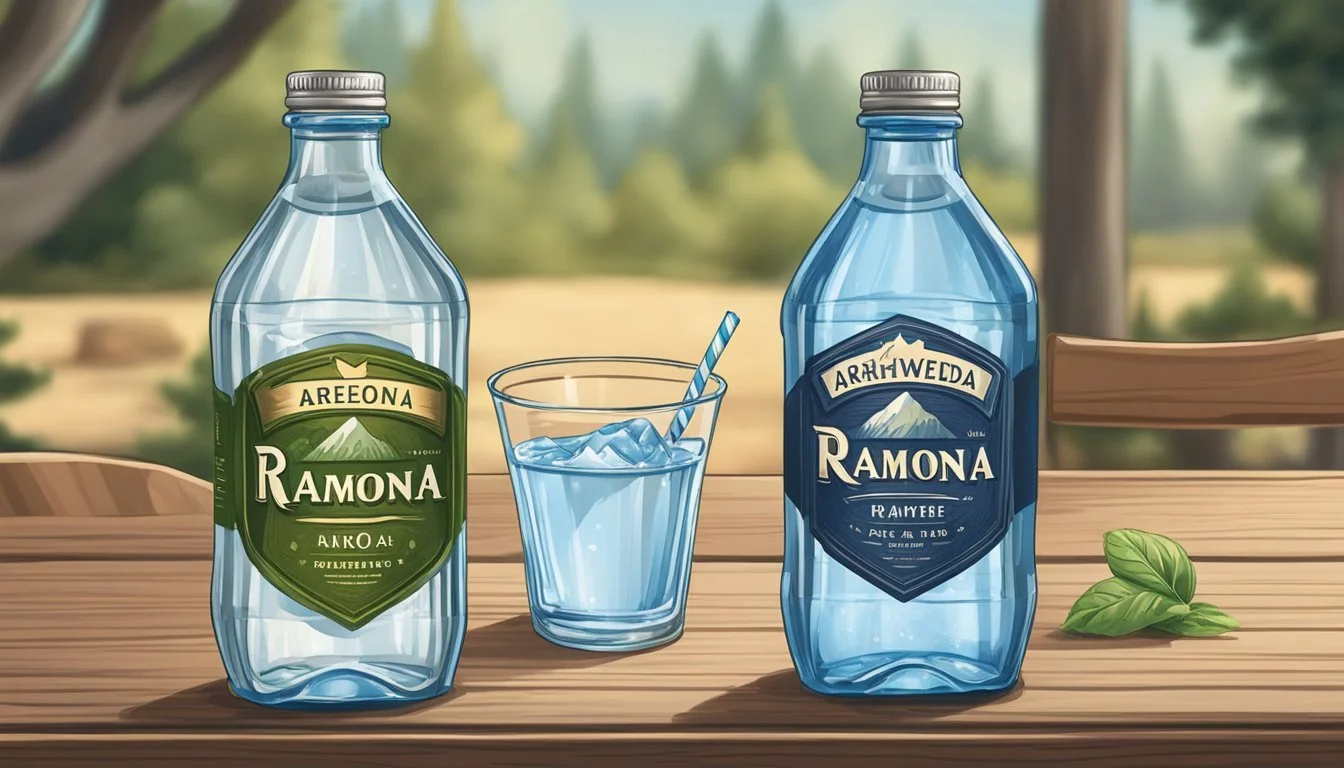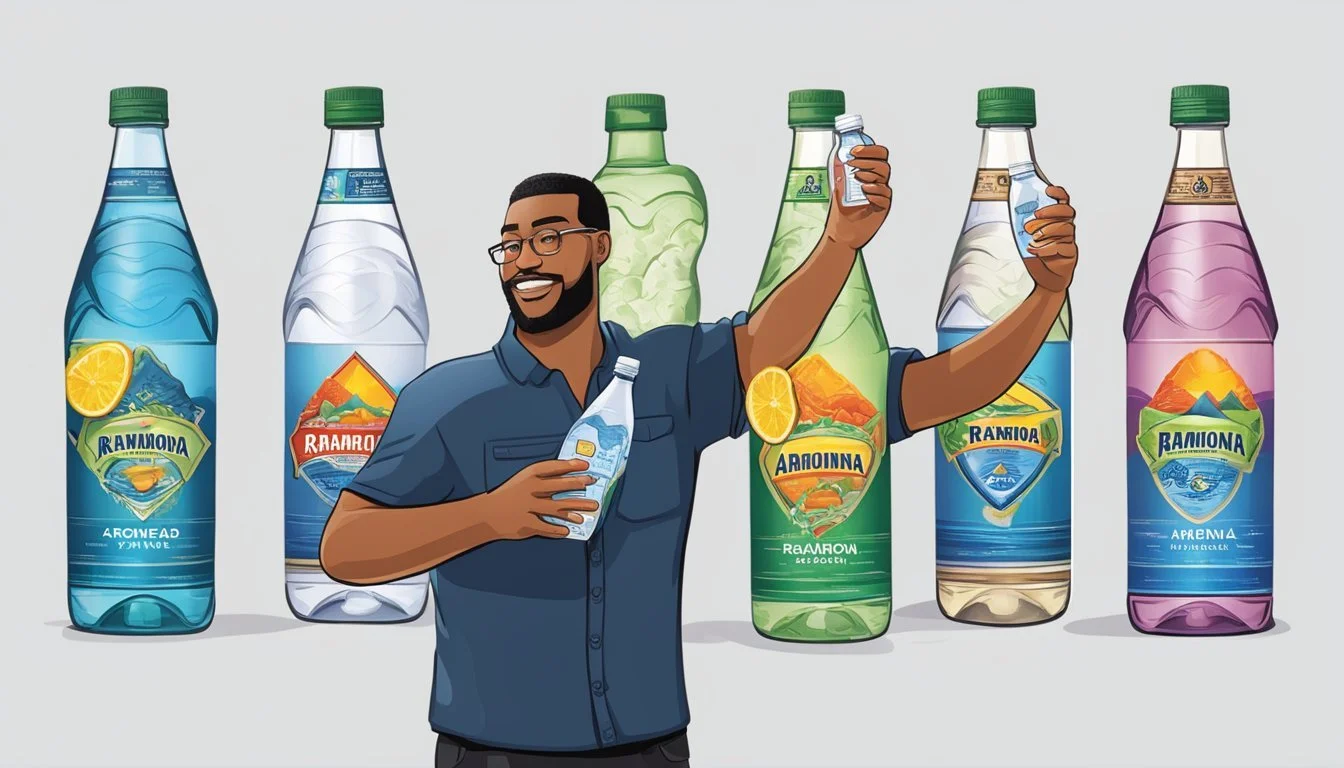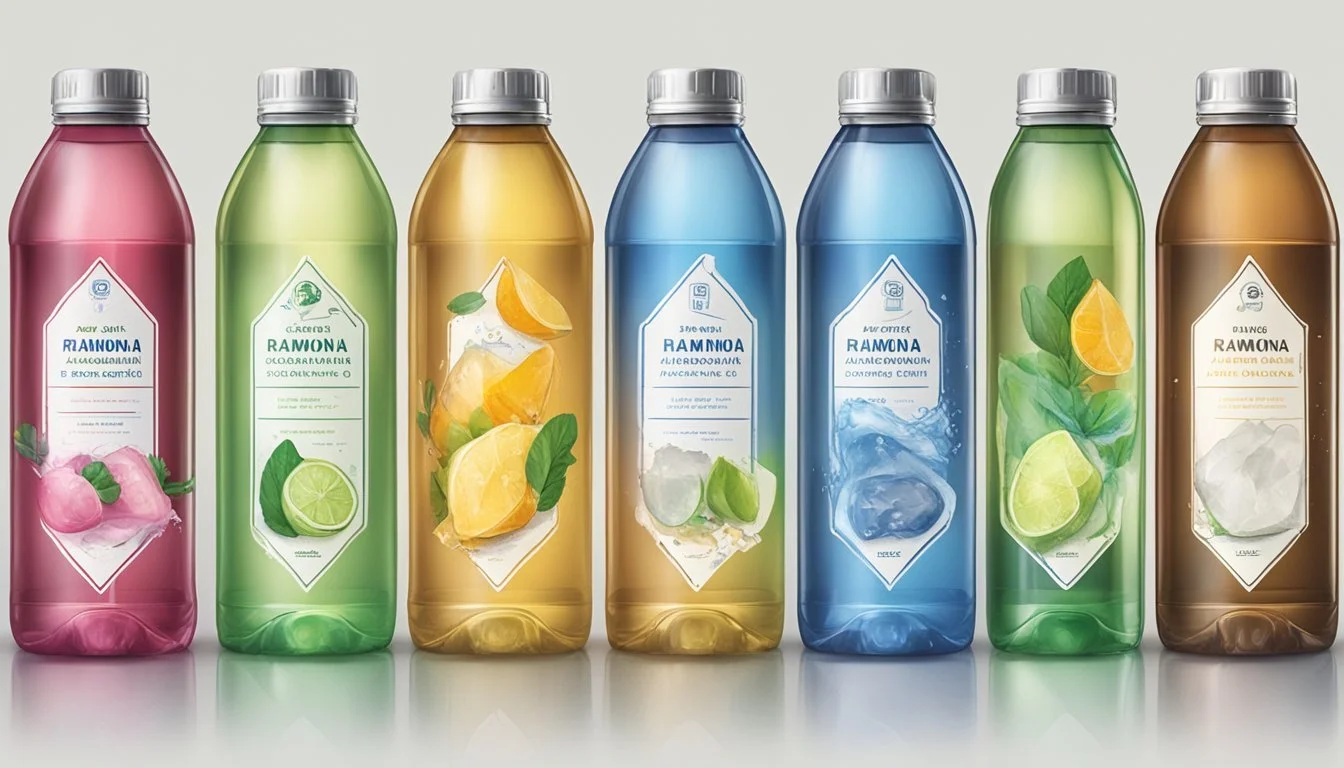Arrowhead vs. Ramona
Which Bottled Water is Better?Comprehensive Comparison and Review
Arrowhead and Ramona are two prominent names in the bottled water industry, each boasting a loyal customer base and unique qualities. Arrowhead is known for its extensive history and recognizable brand name. Sourced from carefully selected springs, Arrowhead aims to provide a refreshing hydration experience.
Conversely, Ramona prides itself on its purity and taste, often highlighted in taste tests and consumer reviews. Its commitment to high-quality water sources stands out in the crowded market. Ramona's superior taste and purity edge out Arrowhead, making it the better choice for those prioritizing flavor and transparency in sourcing.
For consumers seeking a clean and satisfying drinking experience, the differences between these brands are essential. This article will explore the nuances of Arrowhead and Ramona, considering factors such as taste, sourcing, and overall consumer satisfaction.
Comparing Water Brands
Arrowhead and Ramona are two prominent brands in the bottled water industry. Both have rich histories and considerable market presence, playing crucial roles in consumer choices.
History of Arrowhead and Ramona
Arrowhead: Arrowhead Water dates back to the late 1800s. It harnesses its water from natural springs in the San Bernardino Mountains. The brand's long history and commitment to sourcing from these springs have helped it build a sense of authenticity and reliability among consumers.
Ramona: Ramona, a less widely known brand, emerged more recently. It focuses on sourcing water from pristine mountain springs in the Pacific Northwest. The brand emphasizes purity and the natural origin of its water, appealing to consumers who value environmentally conscious products.
Market Presence and Consumer Trust
Arrowhead: As a subsidiary of Nestlé, Arrowhead enjoys extensive distribution and strong market presence. It is often found in major retail stores and enjoys significant consumer trust due to its long-standing history and affiliation with a global company. The brand also engages in numerous marketing initiatives to reinforce its commitment to quality.
Ramona: Though smaller in scale, Ramona has carved out a niche market. Its branding focuses on environmental sustainability and natural purity. This appeals particularly to eco-conscious consumers. While it does not have the same mass-market reach as Arrowhead, Ramona's growing popularity reflects a trend towards more ethically sourced bottled water.
Source and Origin of Waters
Arrowhead and Ramona both originate from distinct sources and undergo different processes before reaching consumers. Understanding their sources and origins helps highlight the unique qualities and treatments each brand employs.
Natural Spring Water Sources
Arrowhead Mountain Spring Water sources its water from natural springs found in the western United States and Canada. These springs are known for their pristine locations, often in remote and mountainous areas. Natural filtration through layers of soil and rock provides Arrowhead its distinct taste and mineral content.
Ramona, on the other hand, also taps into natural springs, primarily located in the Southern California region. These springs are selected for their high-quality water, which undergoes minimal processing to retain its natural mineral composition. The origin ensures a pure, clean taste that is a hallmark of Ramona.
Municipal Water and Purification
In contrast to natural spring sources, some bottled waters derive from municipal sources. Arrowhead does not rely on municipal water supplies; its focus remains on maintaining the integrity of its mountain springs. This allows Arrowhead to offer water that is naturally filtered and rich in minerals without extensive purification.
Ramona, consistent with its natural spring reliance, avoids using municipal water. However, should supplemental sources be necessary, it employs rigorous purification processes to meet safety and quality standards. This can include filtration, reverse osmosis, and UV treatment. Nonetheless, primary dependency remains on natural springs, ensuring the water's origin is pure and naturally sourced.
Consumers seeking clarity on the differences between Arrowhead and Ramona will find that the commitment to sourcing from natural springs significantly distinguishes these brands from those utilizing municipal water. This dedication to high-quality sources is evident in the final product, making their waters stand out in the market.
Quality and Purity
Arrowhead and Ramona are two popular bottled water brands, each with distinct approaches to quality and purity. This section will explore their filtration and purification processes and their adherence to safety standards and regulatory compliance.
Filtration and Purification Processes
Arrowhead and Ramona employ different methods to ensure their water is free from contaminants and safe for consumption. Arrowhead uses a combination of natural filtration through mountain springs and additional filtration steps that include sand filtration, carbon filtration, and ozone disinfection. This process helps remove unwanted particles, improve taste, and ensure disinfection.
In contrast, Ramona relies on a highly advanced multi-step purification process. This includes reverse osmosis, which is effective in removing heavy metals and contaminants. Ramona also employs ultraviolet (UV) light disinfection to kill any remaining microorganisms, and activated carbon filtration to eliminate any chemical residues, including PFAS chemicals.
Safety Standards and Regulatory Compliance
Both brands must adhere to the safety standards set by the EPA and other regulatory bodies to ensure their water is safe. Arrowhead consistently conducts rigorous testing for heavy metals, microbial contaminants, and other pollutants. They provide transparency by making water quality reports accessible to consumers, demonstrating compliance with federal and state regulations.
Ramona exceeds standard requirements by performing additional tests for various contaminants, including PFAS chemicals. Certification by independent bodies adds another layer of credibility, ensuring consumers that Ramona’s water meets or even surpasses official safety guidelines. Their commitment to upholding stringent safety protocols proves their dedication to delivering clean, safe, and high-quality water.
Health and Hydration Benefits
When choosing between Arrowhead and Ramona bottled water, it is important to consider factors affecting hydration and health. These include electrolyte content, pH levels, and specialized health products.
Hydration and Electrolyte Content
Arrowhead water is sourced from mountain springs and is known for its natural electrolyte content. Essential minerals like calcium, magnesium, and potassium are present, supporting hydration and muscle function.
Ramona water takes a different approach by offering electrolyte-infused options specifically designed for hydrating athletes. This can be beneficial for those with higher physical demands, as these products restore electrolyte balance lost through sweat.
Choosing between natural and infused electrolytes depends on personal preference and lifestyle.
pH Levels and Alkalinity
Arrowhead water typically has a pH level ranging from 6.5 to 8.0. This neutral to slightly alkaline range is beneficial for maintaining the body's optimal pH balance.
Ramona water markets itself as having a naturally alkaline pH level, generally around 8.5. Alkaline water enthusiasts believe that higher pH levels help neutralize acidity in the body, promoting better overall health.
For those with specific dietary needs or acidity concerns, Ramona's higher pH might be a preferable option.
Specialized Products for Health
Arrowhead offers several bottled water varieties, including purified, distilled, and flavored options. These cater to different tastes and purification preferences but do not significantly vary in health benefits.
Ramona's product line focuses on enhanced hydration solutions. Their offerings include electrolyte-infused waters and fitness-focused variations. Such products are designed for quicker rehydration and maintaining energy levels during and post-exercise.
Consumers with active lifestyles might find Ramona's specialized products more aligned with their health and fitness goals.
Taste Profile
The taste profiles of Arrowhead and Ramona bottled waters differ significantly, affecting their consumer appeal. Preferences can vary widely depending on individual tastes, which we explore through flavor distinctions and taste test results.
Flavor Differences
Arrowhead water is often characterized by its slightly mineral taste due to the natural springs it is sourced from. This can add a subtle, earthy flavor that some consumers either enjoy or find off-putting.
In contrast, Ramona boasts a cleaner and purer taste. It's known for being neutral with no discernible aftertaste, appealing to those seeking minimal flavor interference. This difference in taste profiles makes each brand suitable for different occasions and preferences.
Consumer Taste Test Results
In blind taste tests, Arrowhead often receives mixed reviews. Some participants appreciate the mineral richness it offers, while others find the taste to be too strong or "earthy." These personal preferences highlight the distinct character of Arrowhead water.
Ramona, on the other hand, tends to score higher for its clean and neutral flavor profile. Many testers describe it as refreshing and pure, affirming its appeal to a broader audience. The consistent feedback underscores Ramona's reliability in delivering a taste that aligns with consumers' expectations for bottled water.
Environmental Impact and Sustainability
This section examines the environmental and sustainability efforts of Arrowhead and Ramona bottled water. It focuses on their bottling processes and water sourcing practices to provide insight into their ecological footprints.
Bottling Processes and Eco-Friendliness
Arrowhead adopts various measures aimed at reducing its environmental impact. The company integrates recycled plastic into its bottles and emphasizes lightweight packaging to minimize plastic usage. Despite these efforts, concerns persist about the overall sustainability of using plastic bottles. Arrowhead faces challenges with plastic waste and its contribution to pollution.
Ramona, on the other hand, employs a more eco-friendly approach by utilizing glass bottles. Glass is reusable and recyclable, reducing single-use plastic waste. However, the production and transportation energy for glass can be significant due to its weight. Therefore, while more ethically resourceful, glass also has some drawbacks in terms of carbon emissions.
Sustainable Practices in Water Sourcing
Arrowhead's water sourcing practices have drawn scrutiny. The company sources water from springs in California, raising ethical concerns about its impact on local water supplies and ecosystems. Legal challenges have highlighted the tension between private resource extraction and public resource preservation.
Ramona focuses on sustainable water sourcing and works to ensure that its extraction practices do not harm the environment. The brand aligns with local regulations and initiatives to maintain the environmentally friendly standard. This minimizes ecological disruption and supports community water management efforts, making Ramona a notable player in sustainable water sourcing.
Comparison between Arrowhead and Ramona:
Aspect Arrowhead Ramona Packaging Recycled plastic, lightweight Glass, reusable and recyclable Environmental Impact Concerns with plastic waste and pollution Reduced plastic waste, higher carbon emissions Water Sourcing Legal and ethical challenges in California Sustainable, aligned with local regulations
Both have their merits and drawbacks, making the choice dependent on specific environmental priorities.
Bottled Water in Consumer Lifestyle
Bottled water plays a crucial role in modern consumer lifestyles. Key aspects include its convenience for everyday use and its incorporation into fitness routines and dietary habits.
Convenience and Portability
Bottled water offers unmatched convenience and portability. Consumers appreciate the ability to grab a bottle and go, whether heading to work, school, or running errands.
It is easy to store in bags, car cup holders, and office desks. Single-use plastic bottles are common, but reusable options are gaining popularity. Brands like Arrowhead and Ramona cater to this demand with various packaging sizes, from small bottles to larger, multi-serving bottles.
The availability of bottled water in vending machines, convenience stores, and supermarkets further enhances its accessibility, ensuring that staying hydrated is never a challenge.
Incorporation in Fitness and Diet
Incorporating bottled water into fitness routines and diets is vital for maintaining hydration. Fitness enthusiasts often rely on brands known for purity and taste.
Hydration is critical during and after workouts, and bottled water provides a reliable source. Brands offering electrolyte-enhanced water cater specifically to those with active lifestyles.
For those on specific diets, like low-sodium or detox plans, choosing bottled water that fits dietary needs is essential. Arrowhead and Ramona both offer options that align with these dietary preferences, making them suitable choices for health-conscious consumers.
Bottled water's role extends beyond mere hydration, becoming a companion in achieving fitness goals and maintaining dietary discipline.
Pricing and Accessibility
It's important to compare both the cost and availability of Arrowhead and Ramona bottled water to ascertain which is the more practical choice for everyday use, especially when weighed against alternatives like tap or filtered water.
Affordability and Market Availability
Arrowhead Water is known for being relatively affordable. Prices typically range from $0.50 to $2 per bottle, with discounts available for bulk purchases. It can be found in many supermarkets, convenience stores, and online retailers. Accessibility is a key advantage, making it a convenient option for many consumers.
Ramona Water, on the other hand, tends to be priced slightly higher, around $1 to $3 per bottle, due to its focus on purity and premium sourcing. Its market availability is somewhat limited compared to Arrowhead. While you can still find it in many stores and online, it is not as ubiquitous, which could be a deciding factor for some consumers.
Comparing Costs to Tap and Filtered Water
When looking at the costs of Arrowhead and Ramona versus tap and filtered water, there are considerable differences. Tap water is the most affordable option, often costing less than a cent per gallon. It's widely accessible and subject to stringent safety standards.
Filtered water, depending on the type of filter used, can cost a bit more. Common filter systems can bring the cost to approximately $0.10 to $0.25 per gallon. These systems can be a middle ground, offering better taste and additional safety compared to unfiltered tap water.
In comparison, both Arrowhead and Ramona are significantly more expensive per gallon. This price difference may be justified by convenience, taste preferences, or perceived safety but is a crucial consideration for budget-conscious consumers.
Brand Innovations and Technologies
Both Arrowhead and Ramona have made significant strides in enhancing the quality and environmental footprint of their products through innovative technologies and packaging advancements. Each brand leverages unique processes to set themselves apart in the competitive bottled water market.
Cutting-Edge Filtration Techniques
Arrowhead utilizes multiple steps in its purification process to ensure the highest quality of water. One of the key techniques employed is reverse osmosis, which removes impurities by forcing water through a semi-permeable membrane. This effectively captures contaminants, resulting in clean and safe drinking water.
Ramona, on the other hand, leverages the Hydro-7 technology. This seven-step filtration process enhances water purity by utilizing advanced methods such as activated carbon filtering and UV light treatment. Such a comprehensive approach not only ensures exceptional purity but also retains essential minerals, providing a refreshing taste.
Packaging Advancements
Arrowhead has invested heavily in sustainable packaging solutions. They have introduced bottles made from 100% recycled plastic (rPET). This move significantly reduces the environmental impact by reusing materials that would otherwise contribute to plastic waste.
Ramona also shows commitment to eco-friendly packaging. They have developed lightweight bottle designs that use less plastic without compromising durability. Additionally, Ramona bottles are fully recyclable, making them an environmentally responsible choice.
Both brands have recognized the importance of sustainability and have tailored their packaging innovations accordingly. Arrowhead’s focus on recycled materials and Ramona’s efficient use of plastic highlight their dedication to reducing their environmental footprint.
The Bottom Line
When comparing Arrowhead and Ramona bottled waters, several factors come into play.
Taste
Many consumers find that Arrowhead has a distinct mineral flavor, which can be both a positive and negative depending on personal preference. Ramona, on the other hand, is often praised for its clean and crisp taste.
Source
Arrowhead sources its water from natural springs located in the western United States, emphasizing a regional and environmentally conscious approach. Ramona also claims natural spring sources, focusing on purity and quality.
Price
In terms of cost, Arrowhead tends to be a mid-range option, while Ramona is often priced slightly higher due to its branding and purported quality.
Popularity
Arrowhead is widely available across various regions and enjoys a broad consumer base. Ramona, although not as universally known, has a loyal following, particularly among those who prioritize taste and premium quality.
Environmental Impact
Both brands emphasize sustainability but in different ways. Arrowhead promotes its eco-friendly bottling practices, while Ramona highlights its minimalistic packaging to reduce waste.
Criteria Arrowhead Ramona Taste Mineral flavor Clean and crisp Source Natural springs in the Western US Natural springs Price Mid-range Slightly higher Popularity Widely available Loyal niche following Environmental Impact Eco-friendly bottling Minimalistic packaging









